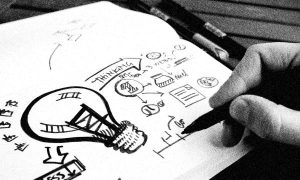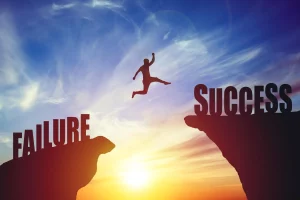Introduction
Failure is a part of life that everyone faces, even the best of us. Learning how to handle failure and learn from it can help you become Stronger and Wiser. In this article, we will explore simple steps and ideas on how to overcome setbacks and turn them into opportunities for growth. We will share creative tips and clear advice that are easy to understand, even for kids. By reading this guide, you will see that failure is not something to be afraid of but a chance to learn and improve. Our journey together will show you how to embrace mistakes, develop a growth mindset, and build resilience. Let’s dive into the world of learning from failure and discover how each setback can lead to a brighter future.
What is This and That: Understanding Failure and Growth

Failure happens when things do not go as planned. It may feel disappointing, but it is a natural part of learning. When you handle failure well, you choose to see it as a lesson rather than a loss. This is where a growth mindset comes in. A growth mindset is the belief that you can improve through hard work and learning from your mistakes. It means you do not let failure stop you but use it to become better. In other words, failure is not the end but a stepping stone to success. When you learn from failure, you understand what went wrong and use that knowledge to try again with new ideas. This simple idea can change your life by making you more resilient and ready to take on challenges.
The Importance of Handling Failure
Handling failure is very important for personal growth. When you face setbacks, you have a chance to discover new ways to overcome obstacles. Learning to handle failure helps you build resilience and prepare for future challenges. Each mistake is an opportunity to learn something valuable about yourself and the world around you. When you take the time to understand your failures, you can develop strategies to avoid making the same mistakes again. This process teaches you patience, determination, and problem-solving skills. A strong ability to learn from failure can boost your confidence and make you feel more capable of handling whatever comes your way. Remember, every successful person has faced failure at some point, and what sets them apart is their willingness to learn from it.
How to Handle Failure and Learn from It
Learning how to handle failure and learn from it starts with accepting that mistakes are a part of life. Instead of feeling upset or giving up, try to see each failure as a chance to learn. First, take a moment to reflect on what happened. Ask yourself what you can learn from the situation and how you might do things differently next time. Write down your thoughts in a journal or talk with a trusted friend or family member. This reflection helps you understand the reasons behind the failure.
Next, set small, achievable goals. Each step you take towards improvement builds your confidence. It is important to celebrate even the smallest successes because they show that you are moving forward. Remember that every mistake is a lesson in disguise. By focusing on what you have learned, you can gradually overcome setbacks and build a strong foundation for future success. Embrace a growth mindset and see failure as a part of your journey toward success.
Practical Tips to Overcome Failure

To handle failure well, here are a few simple tips you can follow. First, always keep a positive attitude. When you face a setback, remind yourself that it is a natural part of learning and growing.
Stay positive and look for the silver lining in every situation. Second, try to learn something new from each failure. Ask yourself, “What did I learn today?” and use that lesson to improve your future efforts.
Finally, be patient with yourself. Remember that building resilience takes time, and every step forward is progress. With these tips, you can start to learn from failure and turn setbacks into stepping stones toward success.
Creative Strategies for Learning from Failure

Creativity can play a big role in turning failure into success. One fun strategy is to create a “Failure Wall” where you write down your mistakes and what you learned from them. This can be a colorful board in your room or even a digital file on your computer. Seeing your lessons on display reminds you that every failure has value. Another idea is to create a comic strip or a short story about a character who overcomes obstacles. This imaginative exercise can help you see failure as an adventure, not a setback.
You might also try role-playing different scenarios with friends or family. Pretend to be a superhero who learns from each challenge and grows stronger with every mistake. These creative activities make learning from failure engaging and fun. They help you build a positive attitude and a growth mindset, turning setbacks into exciting opportunities for learning and improvement.
A Table of Failure to Success Strategies
Below is a table that summarizes simple strategies to Handle Failure and learn from it. This table provides a quick reference for some effective techniques that can help you turn mistakes into stepping stones toward success.
| Strategy | Description | Benefit | Example |
|---|---|---|---|
| Reflect and Journal | Write down what happened and what you learned | Improves self-awareness and planning | Keep a daily journal about challenges and lessons |
| Set Small Goals | Break big tasks into smaller, achievable steps | Builds confidence and shows progress | Create weekly targets to overcome obstacles |
| Positive Affirmations | Use encouraging words to boost your mood | Enhances self-esteem and reduces stress | Say “I can learn from this” after a mistake |
| Role-Playing | Act out scenarios to practice responses to setbacks | Develops problem-solving skills and resilience | Practice handling a difficult situation with friends |
| Create a “Failure Wall” | Display mistakes and lessons learned for visual reminder | Reinforces learning and shows progress | Use sticky notes to share lessons on a bulletin board |
This table shows clear strategies that you can use to transform failures into valuable lessons. These techniques help you stay positive and motivated as you work towards personal growth.
The Benefits of Learning from Failure

Learning from failure has many benefits that go beyond just overcoming setbacks. When you handle failure well, you build resilience and become more confident in your abilities. This strong foundation helps you take on new challenges without fear. It also improves your problem-solving skills because you learn what does not work and can try new approaches.
A healthy attitude towards failure can lead to better relationships. When you are open about your mistakes, others may feel more comfortable sharing their experiences with you. This creates a supportive environment where everyone can learn and grow together. Moreover, learning from failure fosters creativity and innovation. By exploring new solutions and ideas, you can find unique ways to succeed. The benefits of learning from failure are vast, making it an essential skill for both personal and academic success.
Inspiring Stories of Overcoming Failure

There are many inspiring stories of people who turned their failures into success. For example, many famous inventors and entrepreneurs faced many setbacks before they succeeded.
One well-known story is of a person who failed many times before finally creating a product that changed the world. These stories remind us that failure is not the end but a beginning. They show that with hard work, persistence, and a positive attitude, anyone can overcome challenges and achieve greatness.
These real-life examples teach us that every failure is an opportunity to learn and improve. They encourage us to keep trying and to never give up. By looking at these success stories, you can see that failure is just a stepping stone on the path to success.
This mindset is key to handling failure and learning from it. Embrace the idea that every setback is a chance to grow, and you will be well on your way to achieving your dreams.
Simple Tips for Kids to Handle Failure.
Finally, try to celebrate your efforts, even if things do not work out perfectly. Every attempt is a step toward success, and acknowledging your hard work can boost your confidence. These tips make it easier for kids to handle failure and learn from it while staying positive and motivated.
Conclusion
In conclusion, learning how to handle failure and learn from it is an important life skill that can help you become stronger, more creative, and more successful. Embracing failure as a learning opportunity allows you to build resilience and a positive mindset.
When you see every setback as a chance to learn something new, you empower yourself to overcome obstacles and grow. The journey to success is filled with ups and downs, and every mistake is a stepping stone toward a better future.
Remember, every successful person has faced failure at some point. By practicing self-reflection, using creative strategies, and seeking support from those around you, you can turn failures into valuable lessons.
Whether you are a kid learning about emotions or an adult facing challenges, these simple tips and strategies will help you build a brighter, more resilient future. Embrace the idea that failure is not the end, but the beginning of a new opportunity to learn and improve.











